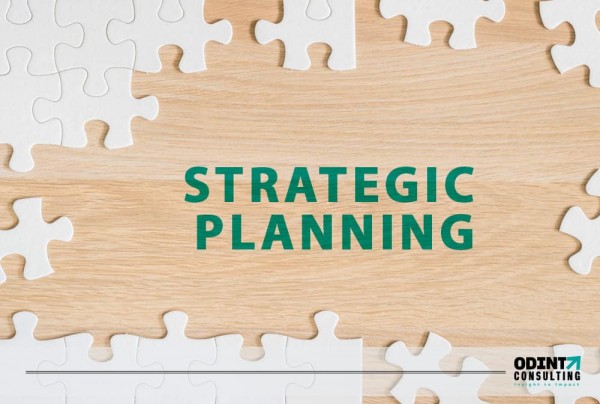In this article we will examine about essential preparation. Find out around:- 1. Importance of Strategic Planning 2. Meaning of Strategic Planning 3. Features of Strategic Planning 4. The Importance of Strategic Planning
Strategic Planning: Meaning, Definition,
Contents:
The Meaning of Strategic Planning
A Definition of Strategic Planning
Features of Strategic Planning
The Importance of Strategic Planning
Strategic Planning – Meaning
In order to achieve hierarchical goals, vital arranging entails predicting strategies and putting them into practise. It starts with asking oneself simple questions such, "What are we doing?" Would it be better for us to continue completing it or alter our product line or method of operation? What impact do social, political, innovative, and other ecological factors have on what we do?Might it be said that we are ready to acknowledge these progressions and so forth.?
Given the associations' strengths and weaknesses, vital planning aids in knowing who we are and where we need to go in order to take advantage of prospective opportunities and natural hazards. An extensive self-assessment of the project's goals and strategies for achieving them is crucial planning that will give it direction and cohesion.
It is "an interaction through which managers create and implement procedures designed to improve crucial objective attainment under readily available external and internal conditions." Strategic planning is the formalization of arrangement, in which long-term plans are developed to achieve hierarchical objectives successfully and effectively. Broad ecological filtration is necessary for key arrangement.
It is a projection into natural dangers and valuable open doors and a work to coordinate them with association's assets and shortcomings.
While long-run arranging may not be completely prepared to retain natural shocks, vital arranging is finished to fathom, expect and ingest ecological fancies. Vital arranging is a ceaseless cycle. Each time business associations need to accomplish a higher development rate or change their tasks, craving for better administration data framework, co-ordinate exercises of various divisions, eliminate carelessness from associations; they make key arrangements.
Arranging is something we do progress of making a move; that is, it is expected navigation. It is a course of concluding what to do and how to do it before activity is required.
Key arrangement can be used as an administrative course of creating and keeping a reasonable fit between association's goals, abilities and assets and its evolving climate.
The organization's brilliant course of action is the beginning stage for arranging. It fills in as a manual for the improvement of sound sub-plans to achieve the hierarchical targets. The point of key arranging is to help an organization select and coordinate organizations in a manner would stay with the sound regardless of surprising changes in the climate. It implies to shape or reshape the organization's organizations and items so they return target benefits and development.
An interesting inquiry that can strike a chord is that - how the traditional long reach arranged gave way to the essential preparation. Before the mid 1970s, administrators who made long-range arrangements by and large accepted that designs for the future were just augmentations of what the association had done previously.
however, ecological shocks during the 1970s and 1980s, for example, energy emergencies, liberation of numerous businesses, speeding up innovative change, and expanding worldwide contest weakening this way to deal with long-range arranging.
These progressions in the "rules of the game" constrained chiefs' foster an efficient way to deal with breaking down the climate, review their association's assets and shortcomings, and distinguishing open doors where the association could enjoy a serious benefit. the worth of key arranging started to be perceived.
Strategic Planning – Definition
The process of selecting a company's long-term goals and then determining the best strategy for accomplishing those goals is known as strategic planning.
An organization's process of identifying its strategy or direction and choosing how to use its resources, including its money and people, to accomplish this strategy is known as strategic planning.
Strategic planning is a process to identify or reevaluate an organization's vision, mission, and goals, and then to map out objective (measurable) means to achieve the goals.
Vital arranging is deliberate, officially recorded process for concluding what are the modest bunches of key choices that an association, saw as a corporate entire should set straight up to flourish throughout the following couple of years.
Vital arranging is a consistent and orderly interaction where individuals come to conclusions about expected future results, how results are to be achieved, and the way that achievement is estimated and evaluated.
Vital arranging is the strategy by which a local area constantly makes arti-verifiable frameworks to fill exceptional need.
Vital arranging is deliberate course of deciding objectives to be accomplished soon.
Strategic Planning – Features
The following are the salient features of strategic planning:
1. Process of Questioning:
It answers questions like where we are and where we want to go, what we are and what we should be.
2. Time Horizon:
It aims at long-term planning, keeping in view the present and future environmental opportunities. It helps organizations analyze their strengths and weaknesses and adapt to the environment. Managers should be farsighted to make strategic planning meaningful.
3. Pervasive Process:
It is done for all organisations, at all levels; nevertheless, it involves top executives more than middle or lower-level managers since top executives envision the future better than others.
4. Focus of Attention:
It focuses organization's strengths and resources on important and high-priority activities rather than routine and day-to-day activities. It reallocates resources from non-priority to priority sectors.
5. Continuous Process:
Strategic planning is a continuous process that enables organizations to adapt to the ever-changing, dynamic environment.
6. Co-Ordination:
It coordinates organizations internal environment with the external environment, financial resources with non-financial resources and short-term plans with long-term plans.
Strategic Planning – Importance
Strategic planning offers the following benefits:
1. Financial Benefits:
Firms that make strategic plans have better sales, lower costs, higher EPS (earnings per share) and higher profits. Firms have financial benefits if they make strategic plans.
2. Guide to Organizational Activities:
Strategic planning guides members towards organizational goals. It unifies organizational activities and efforts towards the long-terms goals. It guides members to become what they want to become and do what they want to do.
3. Competitive Advantage:
In the world of globalisation, firms which have competitive advantage (capacity to deal with competitive forces) capture the market and excel in financial performance. This is possible if they foresee the future; future can be predicted through strategic planning. It enables managers to anticipate problems before they become and solve them before they worse.
4. Minimises Risk:
Strategic planning provides information to assess risk and frame strategies to minimise risk and invest in safe business opportunities. Chances of making mistakes and choosing wrong objectives and strategies, thus, get reduced.
5. Beneficial for Companies with Long Gestation Gap:
The time gap between investment decisions and income generation from those investments is called gestation period. During this period, changes in technological or political forces can disrupt implementation of decisions and plans may, therefore, fail. Strategic planning discounts future and enables managers to face threats and opportunities.
6. Promotes Motivation and Innovation:
Strategic planning involves managers at top levels. They are not only committed to objectives and strategies but also think of new ideas for implementation of strategies. This promotes motivation and innovation.
7. Optimum Utilisation of Resources:
Strategic planning makes best use of resources to achieve maximum output.
General Robert E. Wood remarks, “Business is like war in one respect. If its grand strategy is correct, any number of tactical errors can be made and yet the enterprise proves successful.” Effective allocation of resources, scientific thinking, effective organisation structure, co-ordination and integration of functional activities and effective system of control, all contribute to successful strategic planning.

























